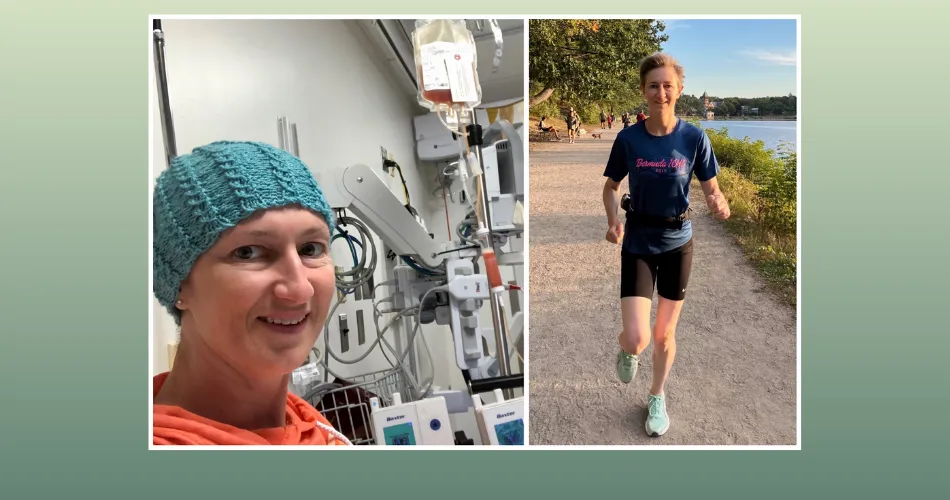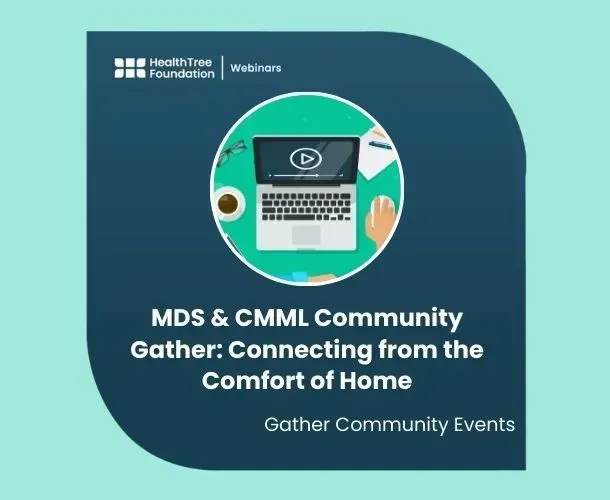What Are the Signs and Symptoms of AML?
Acute Myeloid Leukemia (AML) is an aggressive cancer that affects the blood and bone marrow. The signs and symptoms of AML can vary from person to person but are typically caused by the overproduction of immature blood cells called blasts. These blasts crowd out healthy blood cells in the bone marrow and bloodstream, leading to a range of symptoms and complications. Since these symptoms can resemble other illnesses, it's essential to stay aware of your health and seek medical attention if you're concerned.
What are the Most Common Signs and Symptoms of AML?
Generally, the initial signs and symptoms for people with AML will mimic those of the flu or other common diseases. The most common signs and symptoms of AML include:
- Fatigue and Weakness: Often due to anemia, a condition where there is a shortage of red blood cells.
- Fever: This may be caused by an infection that the body struggles to fight due to a lack of normal white blood cells.
- Shortness of Breath: Another symptom related to anemia.
- Pale Skin: Anemia can also cause a pale complexion.
- Frequent Infections: A shortage of normal white blood cells increases the risk of infections.
- Easy Bruising or Bleeding: This occurs due to a decrease in platelets, which are responsible for blood clotting.
- Petechiae: Small, flat, pinpoint spots under the skin caused by bleeding, often due to a low platelet count.
- Weight Loss: Unexplained weight loss can be a symptom of AML.
- Bone or Joint Pain: This may occur due to the buildup of leukemia cells in the bone marrow.
If you have questions and concerns about experiencing any of these symptoms, talk to your doctor about them. Health professionals are qualified to look at the whole picture and umbrella of symptoms, so they can promptly detect a possible indicator of disease in "mild" looking symptoms.
What are the Symptoms Related to Blood Cell Deficiencies?
The symptoms of AML are largely related to a deficiency in healthy blood cells. The bone marrow produces three types of blood cells, each with specific functions:
- Red Blood Cells: These cells help transport oxygen and nutrients to all tissues. Low red blood cell counts are known as anemia.
- Platelets: These cells affect blood clotting and wound healing. Low counts of platelets are known as thrombocytopenia.
- White Blood Cells: These cells are in charge of the immune responses, protecting the body from harmful substances and organisms such as bacteria, viruses or parasites. Low counts of white blood cells are known as leukopenia, but each deficiency has a different name that indicates which type of white blood cell is low.
Anemia: When your body doesn’t have enough healthy red blood cells, it cannot transfer adequate amounts of oxygen, leading to symptoms such as a pale complexion, fatigue, weakness, and shortness of breath.
Bleeding: A low platelet count leads to easy bruising and excessive bleeding. Since platelets help clot blood, their absence means that your body cannot effectively stop bleeding, which can worsen anemia.
Weakened Immune System: A lack of white blood cells compromises your immune system, making you more susceptible to infections and slower to recover from them.
What Symptoms are Related to Leukemia Cell?
As AML progresses, you may experience additional symptoms due to the high number of leukemia cells:
- Leukostasis: This occurs when large leukemia cells clog blood vessels, potentially causing symptoms similar to a stroke, such as headache, weakness on one side of the body, slurred speech, confusion, and sleepiness. Leukostasis is rare but requires immediate treatment.
- Bleeding and Clotting Issues: People with acute promyelocytic leukemia (APL), a subtype of AML, often experience severe bleeding and clotting problems. This can manifest as persistent nosebleeds, cuts that don’t heal, or more serious issues like swollen limbs (deep tissue clots) or chest pain and shortness of breath (clots in the lungs).
What are the Symptoms that Indicate AML Progression?
As AML progresses, it can spread to various parts of the body, causing different symptoms:
- Skin: The buildup of leukemia cells on the skin's surface is known as myeloid sarcoma.
- Gums: If AML spreads to the gums, it may cause swelling, soreness, and bleeding.
- Nervous System: If AML spreads to the brain or spinal cord, symptoms can include headaches, weakness, seizures, vomiting, balance issues, facial numbness, and blurred vision.
- Lymph Nodes: AML can also spread to the lymph nodes, causing inflammation in areas such as the neck, groin, armpit, and above the collarbone, often felt as lumps under the skin.
Importance of Prompt Medical Care
If you experience any of these symptoms, it's crucial to seek medical attention immediately. AML is a rapidly progressing cancer, and early treatment is essential for the best outcomes. Medical care can help manage and alleviate your symptoms, allowing your doctors to tailor a treatment plan that helps you live as comfortably as possible. Delaying treatment can allow the leukemia to advance, making it more challenging to achieve remission.
Coping with an AML diagnosis is both emotionally and physically demanding. Remember, you don't have to face this alone. If you're experiencing symptoms and want to learn about what has worked for other blood cancer patients, consider visiting HealthTree's Side Effect Solutions tool. Here, you can search for the symptoms you're experiencing and read about what has been helpful (or not) for patients like you.
Stay Informed with AML News
Explore the latest AML news, including patient stories, treatment breakthroughs, and expert insights so you can make confident, informed decisions.
Acute Myeloid Leukemia (AML) is an aggressive cancer that affects the blood and bone marrow. The signs and symptoms of AML can vary from person to person but are typically caused by the overproduction of immature blood cells called blasts. These blasts crowd out healthy blood cells in the bone marrow and bloodstream, leading to a range of symptoms and complications. Since these symptoms can resemble other illnesses, it's essential to stay aware of your health and seek medical attention if you're concerned.
What are the Most Common Signs and Symptoms of AML?
Generally, the initial signs and symptoms for people with AML will mimic those of the flu or other common diseases. The most common signs and symptoms of AML include:
- Fatigue and Weakness: Often due to anemia, a condition where there is a shortage of red blood cells.
- Fever: This may be caused by an infection that the body struggles to fight due to a lack of normal white blood cells.
- Shortness of Breath: Another symptom related to anemia.
- Pale Skin: Anemia can also cause a pale complexion.
- Frequent Infections: A shortage of normal white blood cells increases the risk of infections.
- Easy Bruising or Bleeding: This occurs due to a decrease in platelets, which are responsible for blood clotting.
- Petechiae: Small, flat, pinpoint spots under the skin caused by bleeding, often due to a low platelet count.
- Weight Loss: Unexplained weight loss can be a symptom of AML.
- Bone or Joint Pain: This may occur due to the buildup of leukemia cells in the bone marrow.
If you have questions and concerns about experiencing any of these symptoms, talk to your doctor about them. Health professionals are qualified to look at the whole picture and umbrella of symptoms, so they can promptly detect a possible indicator of disease in "mild" looking symptoms.
What are the Symptoms Related to Blood Cell Deficiencies?
The symptoms of AML are largely related to a deficiency in healthy blood cells. The bone marrow produces three types of blood cells, each with specific functions:
- Red Blood Cells: These cells help transport oxygen and nutrients to all tissues. Low red blood cell counts are known as anemia.
- Platelets: These cells affect blood clotting and wound healing. Low counts of platelets are known as thrombocytopenia.
- White Blood Cells: These cells are in charge of the immune responses, protecting the body from harmful substances and organisms such as bacteria, viruses or parasites. Low counts of white blood cells are known as leukopenia, but each deficiency has a different name that indicates which type of white blood cell is low.
Anemia: When your body doesn’t have enough healthy red blood cells, it cannot transfer adequate amounts of oxygen, leading to symptoms such as a pale complexion, fatigue, weakness, and shortness of breath.
Bleeding: A low platelet count leads to easy bruising and excessive bleeding. Since platelets help clot blood, their absence means that your body cannot effectively stop bleeding, which can worsen anemia.
Weakened Immune System: A lack of white blood cells compromises your immune system, making you more susceptible to infections and slower to recover from them.
What Symptoms are Related to Leukemia Cell?
As AML progresses, you may experience additional symptoms due to the high number of leukemia cells:
- Leukostasis: This occurs when large leukemia cells clog blood vessels, potentially causing symptoms similar to a stroke, such as headache, weakness on one side of the body, slurred speech, confusion, and sleepiness. Leukostasis is rare but requires immediate treatment.
- Bleeding and Clotting Issues: People with acute promyelocytic leukemia (APL), a subtype of AML, often experience severe bleeding and clotting problems. This can manifest as persistent nosebleeds, cuts that don’t heal, or more serious issues like swollen limbs (deep tissue clots) or chest pain and shortness of breath (clots in the lungs).
What are the Symptoms that Indicate AML Progression?
As AML progresses, it can spread to various parts of the body, causing different symptoms:
- Skin: The buildup of leukemia cells on the skin's surface is known as myeloid sarcoma.
- Gums: If AML spreads to the gums, it may cause swelling, soreness, and bleeding.
- Nervous System: If AML spreads to the brain or spinal cord, symptoms can include headaches, weakness, seizures, vomiting, balance issues, facial numbness, and blurred vision.
- Lymph Nodes: AML can also spread to the lymph nodes, causing inflammation in areas such as the neck, groin, armpit, and above the collarbone, often felt as lumps under the skin.
Importance of Prompt Medical Care
If you experience any of these symptoms, it's crucial to seek medical attention immediately. AML is a rapidly progressing cancer, and early treatment is essential for the best outcomes. Medical care can help manage and alleviate your symptoms, allowing your doctors to tailor a treatment plan that helps you live as comfortably as possible. Delaying treatment can allow the leukemia to advance, making it more challenging to achieve remission.
Coping with an AML diagnosis is both emotionally and physically demanding. Remember, you don't have to face this alone. If you're experiencing symptoms and want to learn about what has worked for other blood cancer patients, consider visiting HealthTree's Side Effect Solutions tool. Here, you can search for the symptoms you're experiencing and read about what has been helpful (or not) for patients like you.
Stay Informed with AML News
Explore the latest AML news, including patient stories, treatment breakthroughs, and expert insights so you can make confident, informed decisions.
Get the Latest Acute Myeloid Leukemia Updates, Delivered to You.
By subscribing to the HealthTree newsletter, you'll receive the latest research, treatment updates, and expert insights to help you navigate your health.
Together we care.
Together we cure.
3x Faster.






